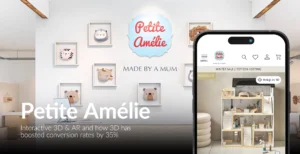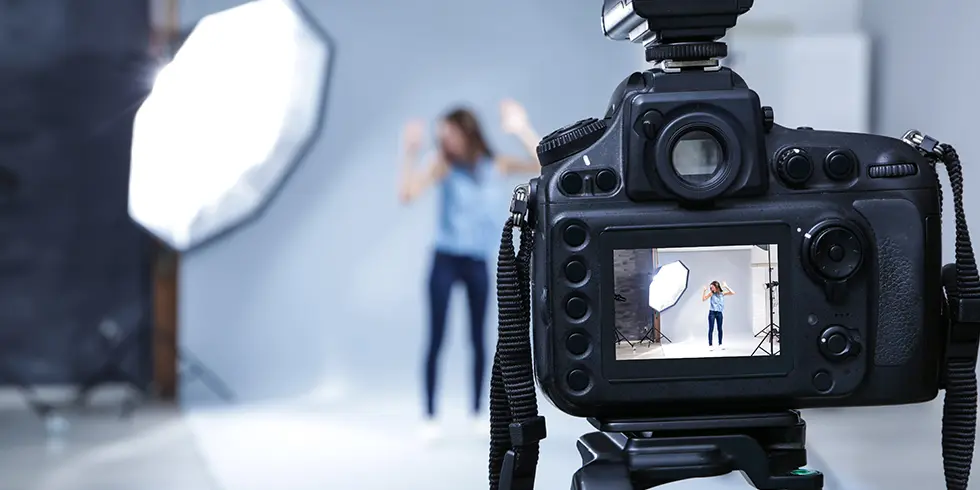Shopping for clothes in a store doesn’t work without seeing the product up close and, ideally trying it on. Then how can you expect your online store to sell clothes if the images are not up to par?
Clothing photography is one of the most critical factors in the decision-making process for customers online. Therefore, getting your fashion product images right in the studio and post-production is essential to boost sales and minimize returns. Since they can’t see the product in person, you want to provide shoppers with an online shopping experience that is as complete and detailed as possible.
Many different aspects are involved in making successful visual product content. Read on to learn these aspects and how to ensure you’re getting your clothing photography right.
How clothing photography impacts e-commerce sales
Shopping for clothing online offers many benefits, especially more convenience and often a wider choice of products than you’ll find in brick-and-mortar stores. But it also has a significant disadvantage compared to offline: customers depend on just a few product images to make a purchase.
It’s impossible to try on a piece of clothing online, just as you can’t understand how the fabric feels. This means that customers take a risk when buying clothes online, and often they end up having to return an item because it because the color or details were not as they expected from the photos.
Because of that, the quality and diversity of your product images are key to encouraging online clothing purchases. 67% of online shoppers say that the quality of the photography is “very important” in selecting and purchasing the product. According to them, it’s even more important than product-specific information (63%), a long description (54%), and ratings & reviews (53%) (Source: MGD Advertising).
Clothing photography essentials for online success
Regarding clothing photography for your e-commerce store, there are a few essentials you need to keep in mind.
1. Photography goals
One essential aspect of clothing photography that is often overlooked is having a clear goal in mind. What are you trying to achieve with your product images? Whether it’s showcasing the clothing in the best light possible or highlighting specific details, make sure your goals are clear and concise.
2. Setting up your studio
Another factor you cannot do without is a well-designed studio set-up. This helps ensure that your images are consistent in terms of quality and style. In addition, it’s essential to choose a background that will complement the clothing.
3. Lighting
One of the most important aspects of clothing photography is lighting. The right type of light shows the clothing in the best way possible to create a more favorable impression with customers.
Natural light is always best for clothing photography, but it’s not readily available in every studio. In that case, ensure your lighting equipment is ready to ensure the correct brightness for your photos to get the best results.
4. Preparing the clothing
Just as models need make-up to look their absolute best on camera, clothes require careful preparation before their shoot. Make sure the items look clean and crisp by checking for spots or blemishes on the fabric. You also want to get out all creases beforehand by ironing the clothing, especially shirts and blouses will benefit from that.
5. Capturing different angles
You also need to ensure that you capture different angles of each product. This will give customers a better idea of what the clothing looks like from all angles and help them make a more informed purchase decision.
In addition, try to capture different close-ups of the clothing as well. This will give customers a better sense of the details and craftsmanship that went into making it.
6. Edit your images wisely
Even after taking great photos of your clothing items, editing them properly before publishing them online is essential. This entails removing creases and adjusting brightness, contrast, and color levels to create a more consistent and polished look across all your images.
You may also consider adding text or graphics to your images for further branding and marketing purposes. For example, you could add your logo, website URL, or a special offer to the image.
7. Strength in diversity
Finally, variation is a must-have when it comes to clothing product images. Make sure to mix different angles, styles, and settings in your photography to make your product content rich and diverse. This will help keep your customers focused on your products, show more of the product itself and encourage them to purchase.
The different ways of doing clothing photography
When photographing clothing for e-commerce, there are a few different ways to go about it. Here are six of the most common methods:
1. Flat lay photography
Flat-lay photography is one of the simplest methods for photographing clothing. It involves taking photos of the clothing laid out on a flat surface. This can be done on a table or in front of a solid color background. By folding the product into the shape, you can make the product appear more attractive to your customers.
2. Clothing on a hanger
An alternative to flat-lay photography is photographing on a hanger against a plain background. This way, the clothing automatically falls into shape, as opposed to a flat lay, which requires more adjusting of the product beforehand. The hanger can be edited out of the photograph quite easily in post-production.
3. Mannequin shots
Mannequin is a popular method for photographing clothing because it produces a more realistic product image than you would with flat lay or hanger shots. The mannequin’s shape will show precisely how clothing will likely fit the customer. Therefore, it makes the product more appealing.
With mannequin shots, you want to remove the mannequin itself from the photo without leaving a trace. The so-called invisible (or Ghost) Mannequin editing technique is the best way to do this with the best result. Curious to know more? Read all about it in this article on our website.
4. Model shots
Model shots are your best option if you want to create the most realistic product images. Mannequins are great, but they are also rigid and will never be able to show clothing as dynamically and appealing as a model can. The downside of using models for your clothing photography is the considerable price tag for each shoot.
If model shots are too costly, you can minimize costs by using your images more efficiently. Discover our POS3D technology for on-model imagery that is still high-quality, yet considerably more affordable.
5. Lifestyle shots
Models can also be used to create lifestyle shots, showing the clothing worn in everyday situations. This looks more interesting than a plain white studio background and helps customers envisage wearing the product more vividly.
6. Creative styling
The fifth and final way to photograph clothing is by using creative styling techniques. This involves using props or accessories that match the style of the clothing or adding text or graphics to the image for branding purposes.
Go the extra mile with video product content
Product videos are becoming an increasingly popular way to market clothing online. Unlike static product images, videos can give customers a more in-depth look at the clothing and show how it moves and looks in real life. This is extremely helpful in convincing customers to make a purchase, as they can see exactly what they’re getting.
85% of online shoppers are likelier to buy after watching a product video. So if you’re looking to take your clothing e-commerce business to the next level, consider adding product videos to your marketing strategy. They may be the boost you need to see increased sales and ROI.
In addition, video content is excellent for SEO (Search Engine Optimization) purposes, which helps you to be found online. High-quality product videos on your website will help you rank higher in search results. This means that more potential customers will see your products and be more likely to click through and make a purchase.
Increase your chances of e-commerce success with professional image editing
Quality photography alone isn’t enough to beat your competitors online. To give your business the edge, you need quality image editing. But this requires a lot of time and expertise.
If you want to boost your business and make the most of your product images, reach out to us. Bright River is used to fulfilling complex post-production tasks in large volumes for Fortune 500 companies and many small to medium retailers.
Feel free to reach out to us for a free demo of our visual product content solutions.


